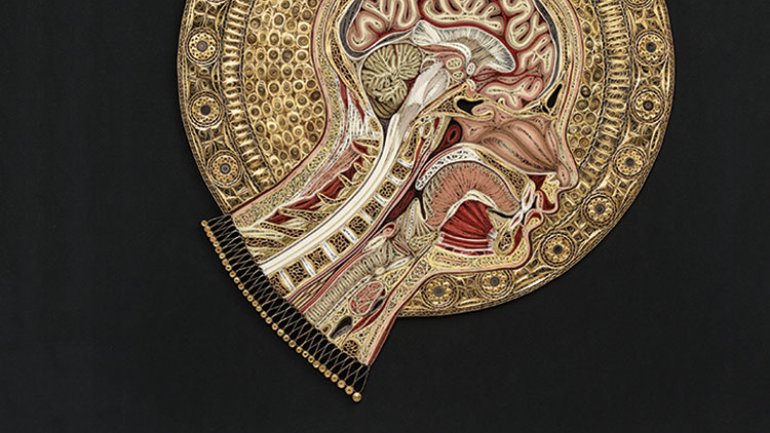Parts & Appendages
Parts & Appendages
The world of art is full of human forms, and perhaps there’s no more common, or exalted, subject. But when you take pieces and parts and rearrange or reattach them, things start to get a little weird.
Ronit Baranga
The realistic lips, teeth, and tongues lurking at the bottom of Baranga's bowls are a little unsettling, to say the least. The Israeli ceramic sculptor incorporates mouths, fingers, and other body parts into her work in clay, adding an unexpected eroticism to utilitarian objects.
Aron Demetz
Italian sculptor Aron Demetz has perfected the human form in sculpture. For the past few years, he’s experimented with different surfaces for his wooden figures – including “skins” that hint at a return to nature or a juxtaposition of perfection and human frailty.
Karine Jollet
Discarded linens, old shirts, and dainty handkerchiefs find new life as textile sculptures. Jollet, based in Paris, re-creates human organs and limbs in white, making the grotesque plush and welcoming, like leftover pieces of a fuzzy Frankenstein.
David Cramer
The schnozz and other appendages – human and not – make up the bulk of Cramer’s portfolio. His Groucho-influenced eyeglass stand can hold more than just specs; it’s fun and functional, crafted from dyed urethane by the Connecticut artist.
Lisa Nilsson
The Massachusetts-based artist re-creates anatomical cross sections in paper, using quilling, or paper filigree. Nilsson rolls, bends, and coils Japanese mulberry paper and the gilded edges of old books to form organs, tissue, and bones in all their exquisitely squishy details.
Christine Chin
Chin's fleshy Shuttling Shakers look like they might wander off the table. Chin, based in New York state, created them using silicone for the toes as part of a body of work called Sentient Kitchen in 2010-11. Other notables from the collection include Good Listener Teacups, Toothed Tongs, and Masticating Meat Grinder. As humans and objects become more connected, will utility go too far?
Freya Jobbins
Disparate plastic doll parts take on new human characteristics in assemblages. Influenced by Arcimboldo, 16th-century painter of the fantastic, as well as Toy Story, Jobbins, based in Australia, takes on overconsumption and consumer fetishism with the materials she all too easily finds among regularly discarded objects.
Dirk Staschke
Fascinated with assemblages and still life paintings, ceramist Dirk Staschke created Premonition (2008), which “seeks to explore the inexplicable through art and craft, life and death, the beautiful and the grotesque, the sacred and the profane, the permanent and the ephemeral,” he says. The artist, based in British Columbia, uses a lifelike ceramic human “wing” holding
a taxidermied bird to raise questions about humans and nature.

